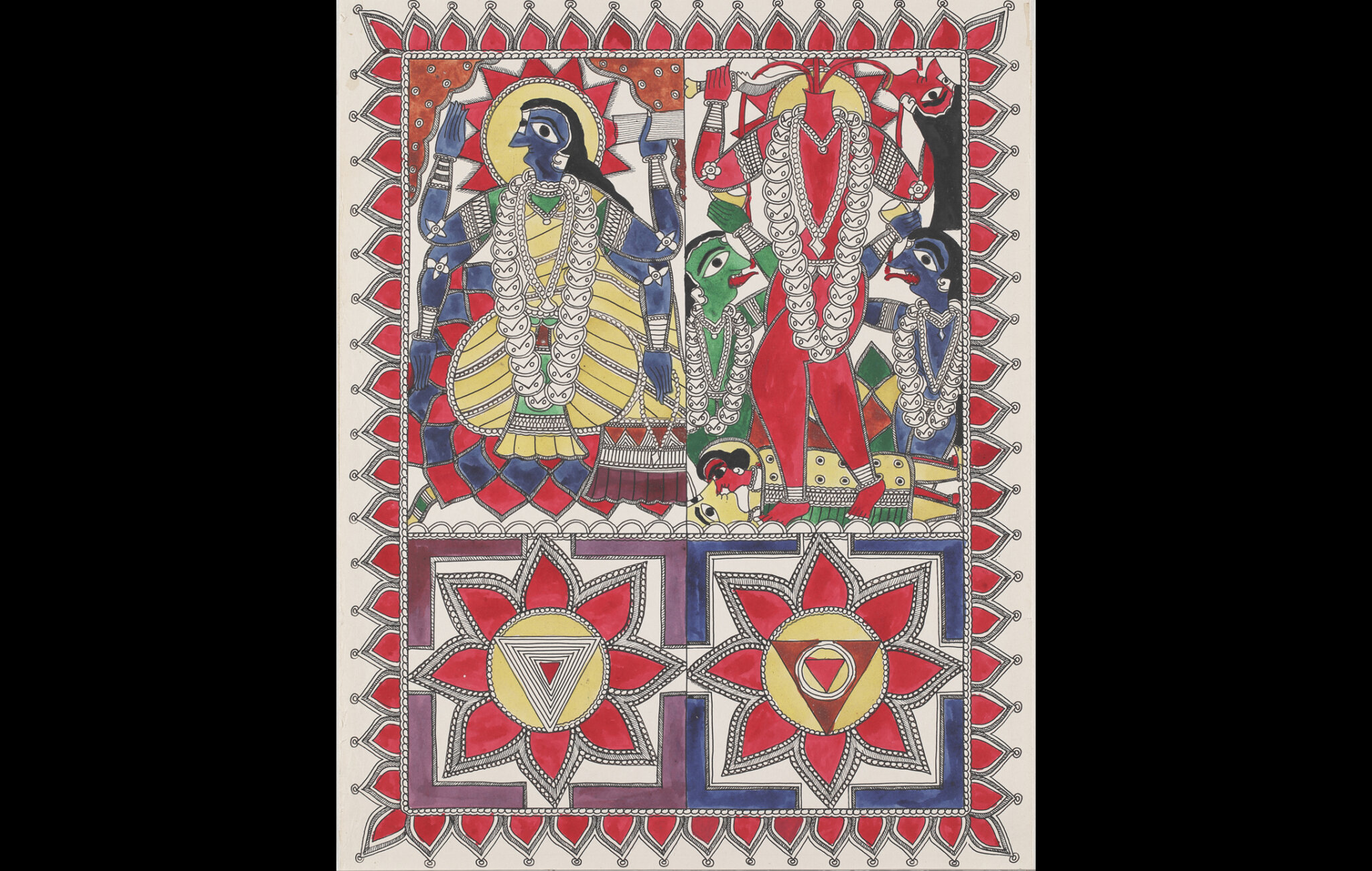
Mithila painting is a traditional mural artform from Madhubani district, Bihar. The artform is known to be a woman’s preserve, one that has roots in the wedding rituals of the Maithil community. Today, many artists from both genders create canvases filled with depictions of religious gods and symbols, socio-political issues as well as rural and natural life. Over the years, Mithila art and artists have acquired tremendous popularity among national as well as international audiences.
This painting created by Krishnanand Jha shows Goddes Bhairavi and Goddess Chinamasta. Both goddesses are part of the Shakti cult Mahavidya, the ten goddesses of wisdom. In the canvas we see Bhairavi on the left and Chinnamasta on the right. While Bhairavi is depicted as seated on a lotus in a calm state. Chinnamasta is depicted as she is described in the Pranatoshini Tantra legend – she is headless, her body springing blood from her neck region, she holds her own severed head in one arm, her blood is feasted on by demons and she sits on a copulating couple. The two lotuses with geometrical symbols seen below are tantric motifs. The canvas is brightly coloured and showcases bold line work.
Krishnanand Jha (1938-2018) was one of the first male artists to pursue Mithila art as a profession. Born to a tantric priest, Krishnanand himself followed tantric rituals. This is why most of his work depicts gods and goddesses. Krishnanand’s paintings began getting attention in the 1980s as they were unlike any other Mithila works. Jha mastered the Kachni style creating exemplary lineworks and patterns using them. At the Ethnic Arts Foundation’s exhibition ‘Mithila Art: the New Generation’ in New Delhi, 2013, he was honored for his life’s work.
To read more on the artform, click here.
Title
Goddess Bhairavi and ChinnamastaPeriod
undatedArtist
Krishnanand JhaMedium
Ink and pigment on PaperDimensions
H: 49.5 cm x W: 38.8 cmAccession No.
2021.3.8Genre: Indigenous & Tribal Art
